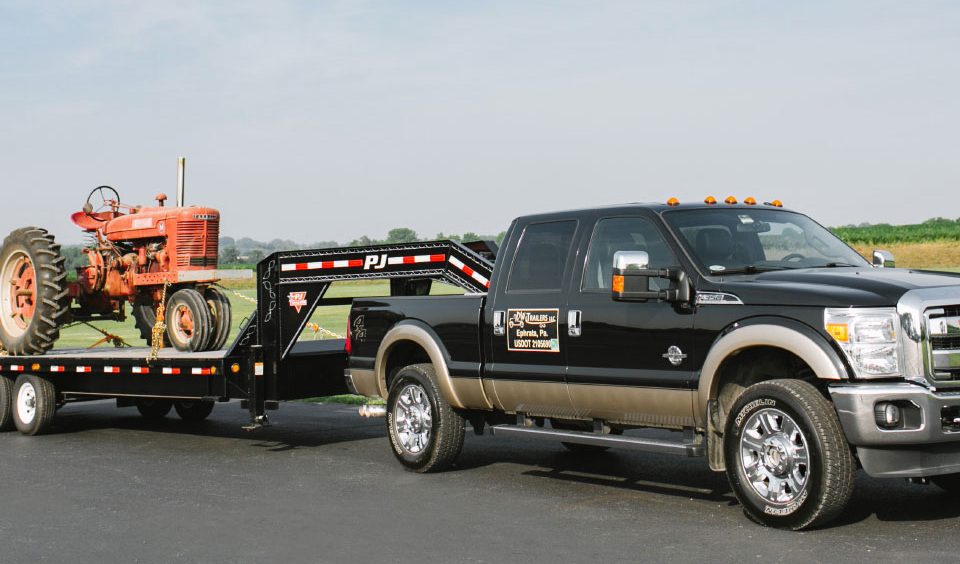Before starting a non-CDL hot shot business, there are a few things you need to do. First, you need to research the hot shot industry and understand the ins and outs of running this type of business. Next, you need to obtain the proper licenses and permits from your state and local government.
Finally, you need to find reliable trucking companies that will work with you to get your freight delivered on time.
- First, you will need to obtain the necessary business licenses and permits from your local government
- Next, you will need to purchase a truck that is suitable for hot shot deliveries
- Once you have your truck, you will need to outfit it with the necessary equipment, such as a flatbed trailer or an enclosed trailer
- Finally, you will need to find clients who are in need of hot shot delivery services and start building up your business!
Non Cdl Hotshot Startup Cost
Starting a hotshot business can be a great way to earn a living while being your own boss. But before you get started, it’s important to understand the startup costs associated with this type of business. Here’s a look at some of the most common expenses you’ll incur when starting a non-CDL hotshot business:
1. Truck and trailer – The most obvious expense when starting a hotshot business is the cost of the truck and trailer. Depending on the size and type of rig you need, this could set you back anywhere from $30,000 to $100,000 or more. If you don’t have the cash upfront, financing options are available through many truck dealerships.
2. Insurance – Another significant expense when starting a hotshot business is insurance. You’ll need both liability and cargo insurance to protect yourself and your load in case of an accident. Rates will vary depending on the size and value of your rig as well as your driving history, but expect to pay several thousand dollars per year for coverage.
3) Permits and licenses – In order to operate legally, you’ll need to obtain the proper permits and licenses for your state and local jurisdictions. Costs will vary depending on where you’re operating, but budget for several hundred dollars in permit fees annually.
4) Maintenance and repairs – Keeping your rig in good working order is crucial to running a successful hotshot business.
Plan on setting aside money each month for routine maintenance like oil changes as well as unexpected repairs that may come up from time to time.
5) Marketing and advertising – To get started, you’ll need to let potential customers know about your services. Investing in some basic marketing materials like business cards or flyers is a good place to start.
Non Cdl Hot Shot Regulations 2022
The FMCSA has released the new non-CDL hot shot regulations for 2022. These new rules will go into effect on January 1, 2022, and will impact all drivers who operate a commercial motor vehicle (CMV) without a valid CDL. Here are the highlights of the new regulation:
– Drivers must have a valid state-issued driver’s license in order to operate a CMV.
– Drivers must be at least 21 years of age to operate a CMV.
– Drivers must have a clean driving record (no major violations within the past three years).
– Drivers must complete an accredited training program before operating a CMV.
– Drivers must pass a DOT physical examination and have no medical conditions that would impair their ability to drive safely.
The new non-CDL hot shot regulations are designed to improve safety on our roads by ensuring that all drivers who operate CMVs are properly trained and qualified to do so.
These new rules will help reduce accidents and save lives.
How to Start a Non Cdl Hot Shot Business in Texas
If you’re looking to start your own hot shot business in Texas, there are a few things you need to know. First, hot shot businesses require a commercial driver’s license (CDL). However, if you don’t have a CDL, you can still start your own hot shot business by partnering with someone who does.
In addition to a CDL, you’ll also need a DOT number. You can apply for a DOT number online through the Federal Motor Carrier Safety Administration website. Once you have your DOT number, you’ll need to register your business with the Texas Secretary of State.
And last but not least, you’ll need insurance.
Hot shot businesses are typically used to transport oversized or overweight loads that can’t be transported using conventional methods. If you’re thinking about starting your own hot shot business in Texas, make sure you have all the necessary requirements before getting started.
How to Start a Hotshot Business With No Money
Starting a hotshot business can be a great way to make money, but it can also be a risky venture. If you don’t have any money to start with, it’s important to take some time to plan and prepare for your new business. Here are a few tips to help you get started:
1. Decide what services you want to offer. Hotshots typically provide transportation for oversized or dangerous loads. Think about what type of equipment and vehicles you have access to and what types of loads you’re willing to transport.
2. Research the hotshot industry. Talk to other hotshot businesses, read articles and books about the industry, and attend trade shows or conferences. This will help you better understand the market and what it takes to be successful in this business.
3. Create a business plan . This document will outline your company’s goals, strategies, and financial needs. A well-written business plan is essential for any new business, especially one that doesn’t have much start-up capital.
4., Get insured . Insurance is critical for any trucking company, but it’s especially important for hotshots since they often haul high-value or hazardous materials..
There are many different types of insurance available, so talk to an insurance agent about which ones make sense for your business.. Be sure to get quotes from several different insurers before making a decision.
.
Non Cdl Hot Shot Loads App
If you’re looking for hot shot loads, there’s no need to get a CDL. You can find plenty of non-CDL hot shot loads right here on the Load board. Just set your filters to include only non-CDL loads, and you’ll be all set!
Non Cdl Hotshot Jobs
There are many non-CDL hotshot jobs available for those who are looking for a new career. These jobs can be found in a variety of industries, including transportation, construction, and even retail.
For those who are not familiar with the term, hotshotting refers to the transport of goods or materials using a smaller truck or trailer.
This type of work is often done by independent contractors who own their own vehicles.
One of the most popular industries for hotshotters is transportation. Hotshotters can find work transporting small loads or oversized loads across the country.
They can also find work hauling hazardous materials or working as part of a team to transport large loads.
Construction is another industry where hotshotters can find employment. Hotshotters can find work driving dump trucks, concrete mixers, and other heavy equipment to job sites.
They may also find work delivering building materials to construction sites.
Retail is another industry that employs hotshotters. Hotshotters can find work delivering furniture or appliances to retail stores.
They may also find work moving inventory around warehouses or distribution centers.
Best Non Cdl Hotshot Truck
If you’re looking for a hotshot truck that doesn’t require a CDL, here are some of the best options on the market.
The Dodge Ram 3500 is one of the most popular non-CDL hotshot trucks. It’s available in both 2WD and 4WD models, and it can tow up to 23,780 pounds.
The Ram 3500 also has a payload capacity of 7,390 pounds, making it a great option for hauling heavy loads.
Another great non-CDL hotshot truck is the Chevrolet Silverado 3500HD. It has a towing capacity of 23,100 pounds and a payload capacity of 7,153 pounds.
The Silverado 3500HD is available in both 2WD and 4WD models.
If you need an even heavier-duty truck, check out the Ford F-450 Super Duty. It has a towing capacity of 31,200 pounds and a payload capacity of 8,000 pounds.
The F-450 Super Duty is only available in 4WD models.
How to Start a Hot Shot Business in Texas
If you’re looking to start a hot shot business in Texas, there are a few things you’ll need to do. First, you’ll need to obtain a DOT number and register your business with the FMCSA. Next, you’ll need to get insurance for your business.
Finally, you’ll need to find loads to haul.
Here’s a step-by-step guide on how to start a hot shot business in Texas:
1. Obtain a DOT number and register your business with the FMCSA.
You can apply for a DOT number online through the FMCSA website. Once you have your DOT number, you’ll need to register your business with the FMCSA. You can do this by filling out an application on their website.
2. Get insurance for your business. It’s important that you have liability insurance for your hot shot business in case something goes wrong while you’re transporting a load. You can get quotes from different insurers online or through brokerages specializing in transportation insurance.

Credit: www.cnstrains.com
Can You Make Money Hotshotting Without Cdl?
There are a few different ways that you can make money hotshotting without CDL. The first way is to find a company that does not require a CDL for their drivers. There are some companies out there that will allow you to drive for them without having a CDL.
The second way is to get your CDL and then find a company that specializes in hot shot trucking. These companies usually have their own fleet of trucks and they are always in need of drivers.
Can Hotshot Run Without Dot Number?
In order to operate legally, hotshot carriers must obtain a DOT number. Without a DOT number, they cannot run their business. The Department of Transportation (DOT) issues these numbers and regulates the trucking industry to ensure that carriers are safe and compliant with federal regulations.
What Makes a Hotshot Non-Cdl?
There are many factors that can make a hotshot non-CDL. The most common reason is simply because the truck does not have a CDL required to operate it. This could be due to the truck being too old or not having the proper registration.
Another reason might be because the driver does not have a CDL license, which is required in most states. Finally, the hotshot might not have insurance, which is also required in most states.
How Do I Start a Small Hotshot Trucking Business?
There are a few things you need to do in order to start your own hotshot trucking business. First, you’ll need to find a niche market that you can serve. This could be hauling oversize loads, working with a certain type of freight, or serving a specific region.
Once you’ve identified your niche, you’ll need to get the proper licenses and permits in order to operate legally. You’ll also need to purchase insurance for your business and vehicles. Finally, you’ll need to invest in some quality trucks and trailers that can handle the loads you plan on hauling.
With all of these pieces in place, you’ll be ready to start hauling and making money!
How to Start a Non-CDL Hotshot Trucking Company – Step by Step
Conclusion
Assuming you would like a summary of the blog post titled “How to Start a Non-CDL Hot Shot Business”:
The first step is to research your state’s requirements for starting a hot shot business. You will need to obtain a business license and insurance, as well as make sure your vehicles are properly registered and inspected.
Next, create a business plan outlining your services, pricing, and marketing strategy. Then, find reliable drivers and purchase the necessary equipment for your business. Finally, promote your new hot shot business online and through word-of-mouth to get started.



